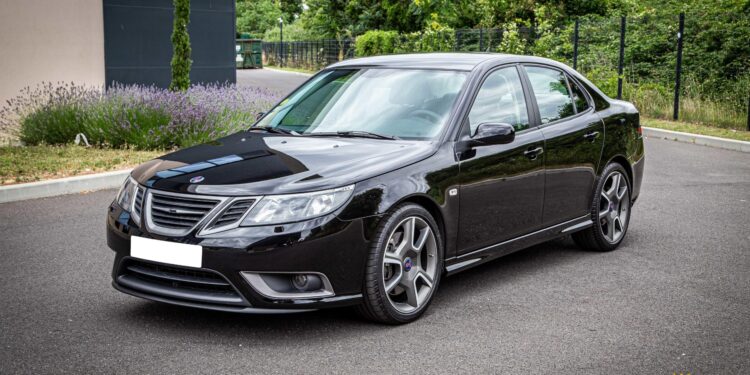Swedish defense company Saab has secured a significant contract to supply the Czech Republic with a state-of-the-art mobile air defence system. The order marks a key development in the Czech military’s efforts to enhance its air defense capabilities amid growing regional security concerns. Saab’s advanced technology is expected to bolster the country’s ability to detect and intercept aerial threats, reinforcing its national defense infrastructure. Further details about the contract and delivery timelines are anticipated as the partnership progresses.
Saab Secures Major Mobile Air Defence Contract from the Czech Republic
Saab has formalized a significant agreement with the Czech Ministry of Defence to supply a state-of-the-art mobile air defence system. This contract marks a major step in bolstering the Czech Republic’s aerial protection capabilities amidst evolving security challenges in Europe. The system will combine advanced radar, missile technology, and command and control units to provide robust, rapid response against a wide range of aerial threats.
Key components of the contract include:
- Delivery of integrated radar and launcher vehicles designed for high mobility
- Advanced missile interceptors optimized for multi-target engagement
- Comprehensive training and support packages to ensure operational readiness
| Feature | Specification | Benefit |
|---|---|---|
| Radar Range | 60 km | Early threat detection |
| Missile Type | Short to Medium Range | Versatile engagement options |
| System Mobility | Tracked vehicle | Rapid repositioning capability |
Advanced Capabilities and Strategic Benefits of Saab’s Mobile Air Defence Systems
Saab’s mobile air defence systems are engineered to provide rapid, precise, and resilient protection against a wide spectrum of aerial threats. These systems incorporate cutting-edge radar technology capable of detecting, tracking, and engaging multiple targets simultaneously, even under challenging electronic warfare conditions. The platform’s mobility ensures seamless integration with various military units, enabling dynamic repositioning on the battlefield and enhancing survivability against increasingly sophisticated adversaries. Key features include autonomous target acquisition, real-time threat analysis, and secure communication links to allied command centers.
- Advanced Multi-target Engagement: Simultaneous handling of diverse aerial threats, including drones, helicopters, and missile systems.
- Enhanced Mobility: Rapid deployment on diverse terrains, ensuring continuous protection during forward operations.
- Integrated Command and Control: Seamless connectivity with other defence assets for coordinated responses.
- Low Radar Signature: Designed for stealth movement to avoid enemy detection while maintaining operational readiness.
| Capability | Benefit | Impact on Defence Strategy |
|---|---|---|
| Real-time Target Tracking | Increased interception success | Reduces risk of airspace breaches |
| High Mobility Platform | Rapid repositioning | Maintains constant coverage of critical zones |
| Robust Electronic Countermeasures | Resilience against jamming and spoofing | Ensures system reliability in contested environments |
From a strategic perspective, deploying Saab’s mobile air defence systems significantly bolsters national security by creating flexible and adaptive defensive layers. The systems’ modular architecture allows the Czech Republic to tailor operational capacity according to evolving threat landscapes and alliance commitments. This upgrade enables not only enhanced protection of vital infrastructure but also strengthens deterrence by complicating an adversary’s attack calculus. Integrating these systems into existing defence networks fosters interoperability with NATO partners, enhancing collective defence readiness in the European theatre.
Recommendations for Enhancing Regional Security through Mobile Air Defence Integration
To bolster regional security, cooperation between nations should focus on the seamless integration of mobile air defence systems, such as those recently ordered by the Czech Republic from Saab. This integration can be achieved by prioritizing joint training exercises that simulate real-world scenarios, fostering interoperability between different mobile platforms and command units. Emphasizing a network-centric approach boosts situational awareness and enables faster response times against airborne threats, ultimately creating a unified defensive shield across borders.
Moreover, investment in advanced communication technologies and standardized protocols is essential to enhance information sharing between allied forces. Key measures include:
- Real-time data exchange: Ensuring rapid transmission of targeting information to all mobile air defence units.
- Cross-border command coordination: Facilitating unified command structures for coordinated engagement strategies.
- Modular system upgrades: Allowing easy integration of new sensors, missiles, and radar capabilities within existing mobile platforms.
| Integration Element | Benefit |
|---|---|
| Joint Training | Enhanced teamwork and communication |
| Standardized Communication | Faster threat identification and response |
| Modular Upgrades | Future-proofed defence capabilities |
Closing Remarks
The contract between Saab and the Czech Republic marks a significant step in enhancing the country’s mobile air defence capabilities amid regional security concerns. As the implementation of this order progresses, both parties are expected to collaborate closely to ensure timely delivery and operational readiness. This development reflects Saab’s growing presence in Eastern Europe’s defence sector and underscores the Czech Republic’s commitment to modernizing its military infrastructure. Further updates on the project’s progress and impact are anticipated in the coming months.
















